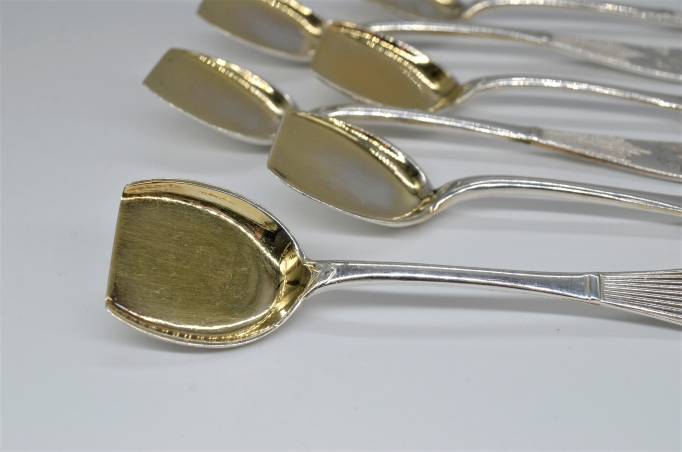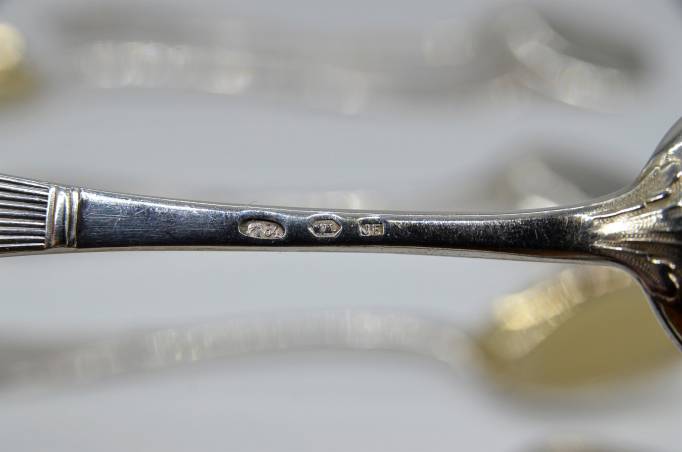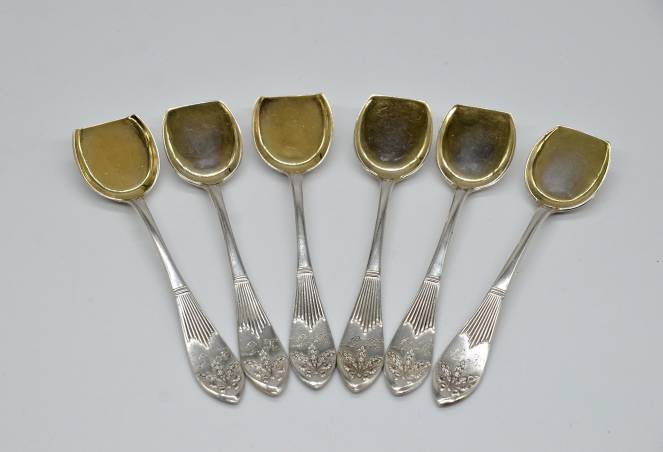






A set of six luxury caviar spoons made in cooperation in the workshop of Władysław Hempel, commissioned by Józef Fraget. Spoons with originally gilded scoops in the form of scoops, with handles decorated with the most elegant classicist design. The spoons are large, made entirely of 84 thick-walled silver; length 13.7 cm, total weight 190 grams. On each of the spoons there is a visible Warsaw hallmark for silverware of the fineness of 84 used in the years 1908-1915, workshop mark Wł. Hempel "WH" and the trademark of Józef Fraget "JF". Excellent general condition, spoons with small micro scratches, minimal signs of use, natural patina of time. Display spoons, luxury, not available on the antiquarian market !!! "The Hempel company, through the Society of Applied Arts in Krakow, announced a competition for spoon designs. In 1902, at the Society's exhibition in Warsaw, the awarded designs (10 works in total) were shown, which were commissioned by other goldsmiths as part of cooperation" Władysław Hempel (1871 Warsaw - 1944 Buchenwald). The most talented student of Antoni Riedl, signed as a journeyman in 1890, a goldsmith's master from 1904. Together with his brother Stefan, he established a silverware and silverware factory. The company developed quickly, operated very dynamically, also importing foreign silver. The history of this great goldsmith's company ends with the Second World War. Fraget Józef (born in 1797 in La Ferté near Jouarre - died in 1867 in Warsaw; industrialist. He studied at polytechnic institutes in Paris and Berlin. Brought to Warsaw in 1824 by the then Minister of Internal Affairs Tadeusz Mostowski, he launched the first plant of plated products in Poland, initially small, from 1844 its own factory at 16 Elektoralna Street, constantly modernizing production (among others, it set up a laboratory for electroplating silvering and gilding metal products), placed the factory among the best in Europe. The excellence and aesthetic value of silver and fraget platters were highly valued in the entire Kingdom of Poland and Russia. After Fraget's death, the factory was run by his son Julian (1841-1906).